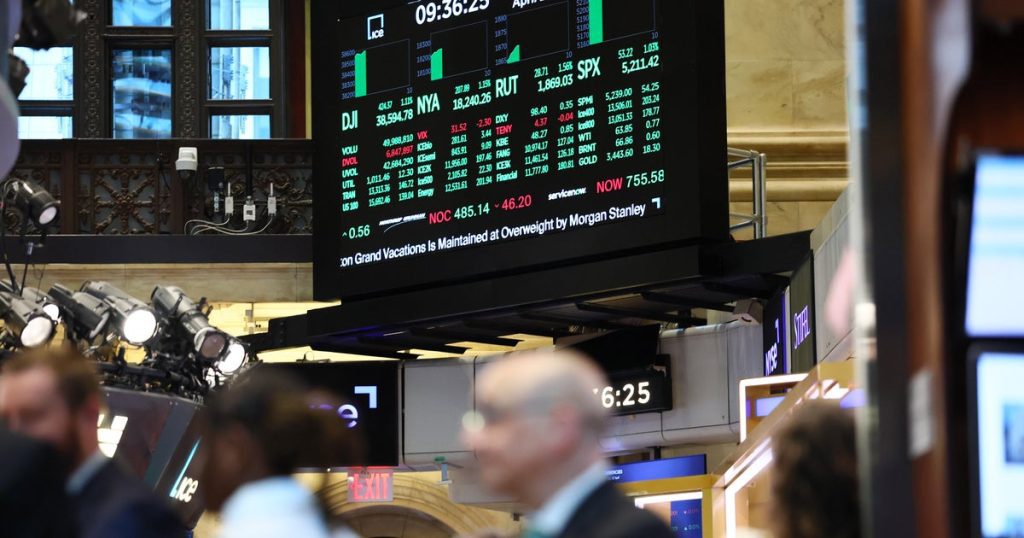Stock Market Overview
U.S. stocks fluctuated on Friday, marking the end of a three-day rally fueled by optimism regarding a potential easing of trade tensions.
The Dow Jones Industrial Average increased by 20 points, or 0.1%, concluding at 40,114. The S&P 500 saw a gain of 40 points, or 0.7%, reaching a close of 5,525. The Nasdaq Composite rose by 1.3%, driven by gains from major technology stocks such as Nvidia.
Impact of Trump’s Trade Stance
In recent days, President Trump adopted a more conciliatory approach to trade, alleviating investor fears and contributing to a three-day rebound following a turbulent trading session on Monday. Paul Ashworth, Chief North America Economist at Capital Economics, noted in a research report that negative market conditions significantly influenced the president’s reassessment of his substantial tariffs on Chinese imports, which currently sit at 145%.
Mixed Signals on Trade Deals
Investors are also responding to conflicting signals from the White House regarding potential trade agreements. This week, President Trump hinted at a possible deal with China, but the Chinese government refuted claims of ongoing negotiations. However, reports indicate that China may be unwilling to maintain its 125% retaliatory tariffs on U.S. semiconductors, suggesting a possible easing of their position.
Market Volatility and Economic Forecasts
“We’re experiencing a market driven by headlines, leading to volatility and unpredictable trading ranges,” said Bret Kenwell, a U.S. investment analyst at eToro. “This pattern is likely to persist until we gain more clarity on the situation.”
Concerns from Corporations
Several companies expressed concern over the uncertainty stemming from Trump’s trade policies, complicating their financial forecasts for the upcoming year. Intel’s stock dropped by 6.8% after the chip manufacturer reported “elevated uncertainty” in the industry and a revenue outlook that fell short of expectations.
Recent Developments in Trade Negotiations
In recent weeks, the Trump administration has been negotiating various bilateral trade deals. Following a temporary halt on the implementation of “reciprocal tariffs,” market relief has been noted. Analysts at UBS stated that the halt indicates the administration is increasingly aware of the potential negative impact of tariffs on market dynamics.
Global Market Trends
While U.S. stocks showed some weakening on Friday, easing in 10-year Treasury yields and a recovery in the U.S. dollar provided relief. The 10-year Treasury yield dropped to 4.3% from a peak of 4.4% earlier in the week. Meanwhile, international stock markets experienced modest gains across Europe, following a mixed performance in Asia, where Japan’s Nikkei 225 rose by 1.9% and Shanghai’s stocks fell by 0.1%.



